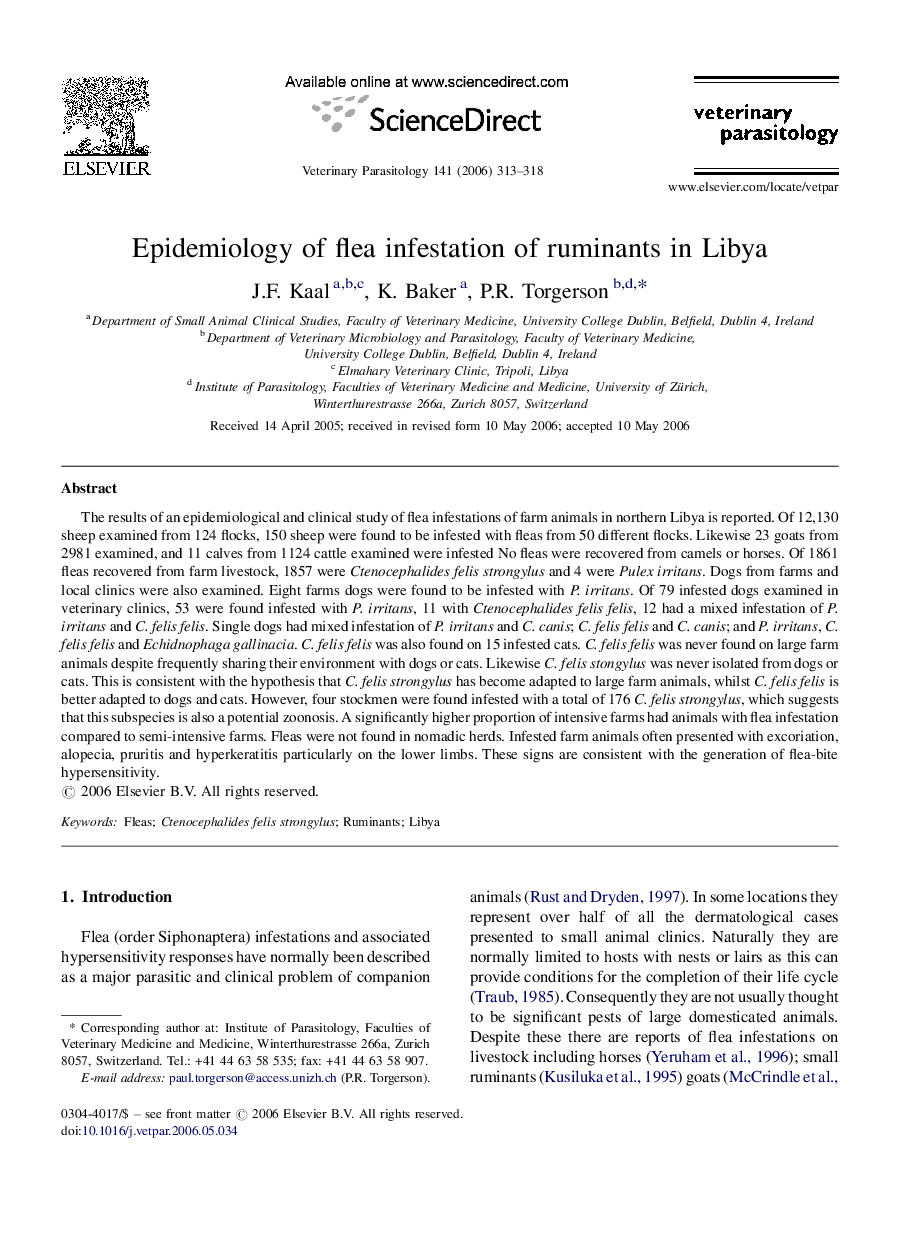| کد مقاله | کد نشریه | سال انتشار | مقاله انگلیسی | نسخه تمام متن |
|---|---|---|---|---|
| 2472319 | 1555790 | 2006 | 6 صفحه PDF | دانلود رایگان |

The results of an epidemiological and clinical study of flea infestations of farm animals in northern Libya is reported. Of 12,130 sheep examined from 124 flocks, 150 sheep were found to be infested with fleas from 50 different flocks. Likewise 23 goats from 2981 examined, and 11 calves from 1124 cattle examined were infested No fleas were recovered from camels or horses. Of 1861 fleas recovered from farm livestock, 1857 were Ctenocephalides felis strongylus and 4 were Pulex irritans. Dogs from farms and local clinics were also examined. Eight farms dogs were found to be infested with P. irritans. Of 79 infested dogs examined in veterinary clinics, 53 were found infested with P. irritans, 11 with Ctenocephalides felis felis, 12 had a mixed infestation of P. irritans and C. felis felis. Single dogs had mixed infestation of P. irritans and C. canis; C. felis felis and C. canis; and P. irritans, C. felis felis and Echidnophaga gallinacia. C. felis felis was also found on 15 infested cats. C. felis felis was never found on large farm animals despite frequently sharing their environment with dogs or cats. Likewise C. felis stongylus was never isolated from dogs or cats. This is consistent with the hypothesis that C. felis strongylus has become adapted to large farm animals, whilst C. felis felis is better adapted to dogs and cats. However, four stockmen were found infested with a total of 176 C. felis strongylus, which suggests that this subspecies is also a potential zoonosis. A significantly higher proportion of intensive farms had animals with flea infestation compared to semi-intensive farms. Fleas were not found in nomadic herds. Infested farm animals often presented with excoriation, alopecia, pruritis and hyperkeratitis particularly on the lower limbs. These signs are consistent with the generation of flea-bite hypersensitivity.
Journal: Veterinary Parasitology - Volume 141, Issues 3–4, 5 November 2006, Pages 313–318